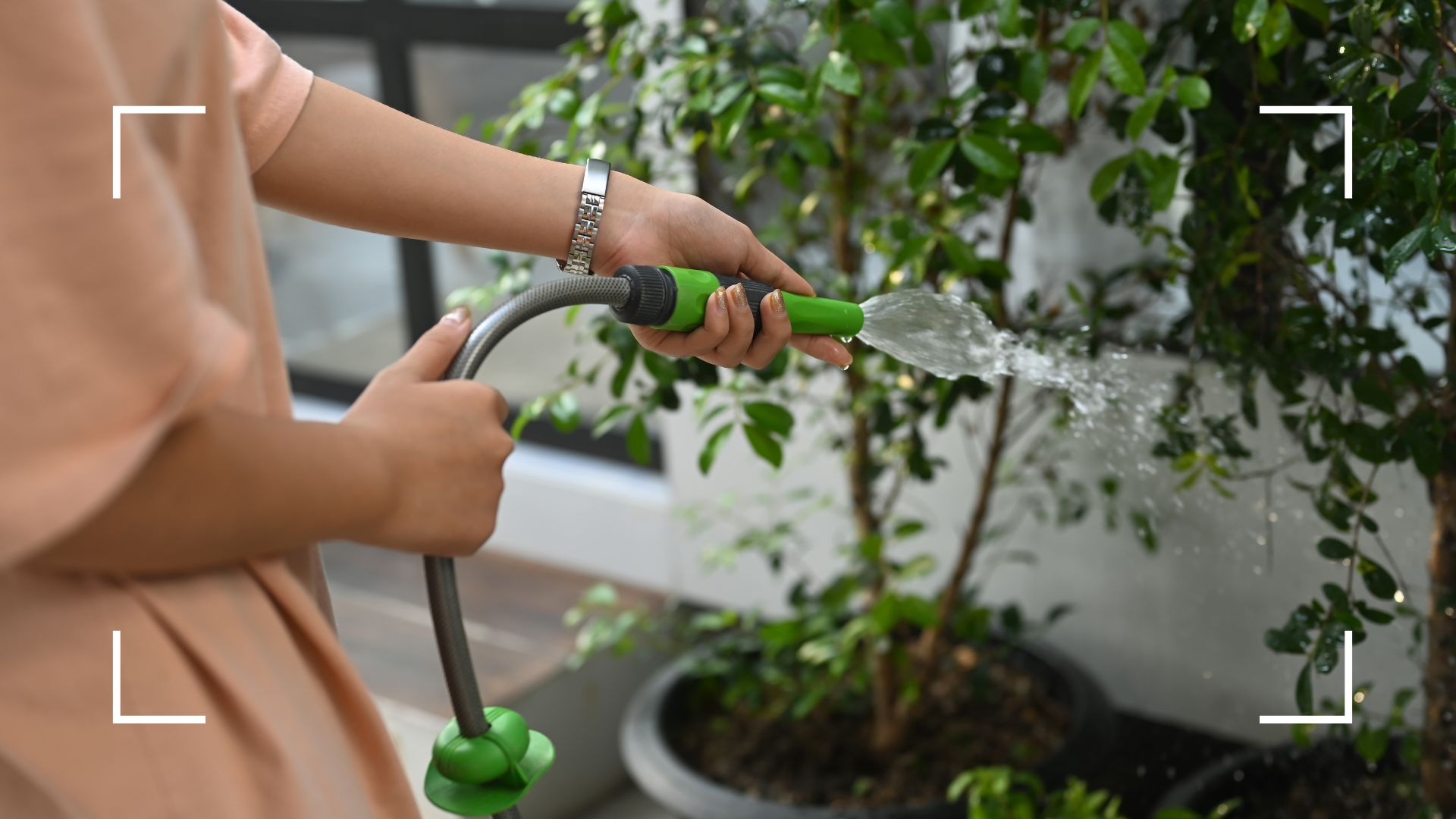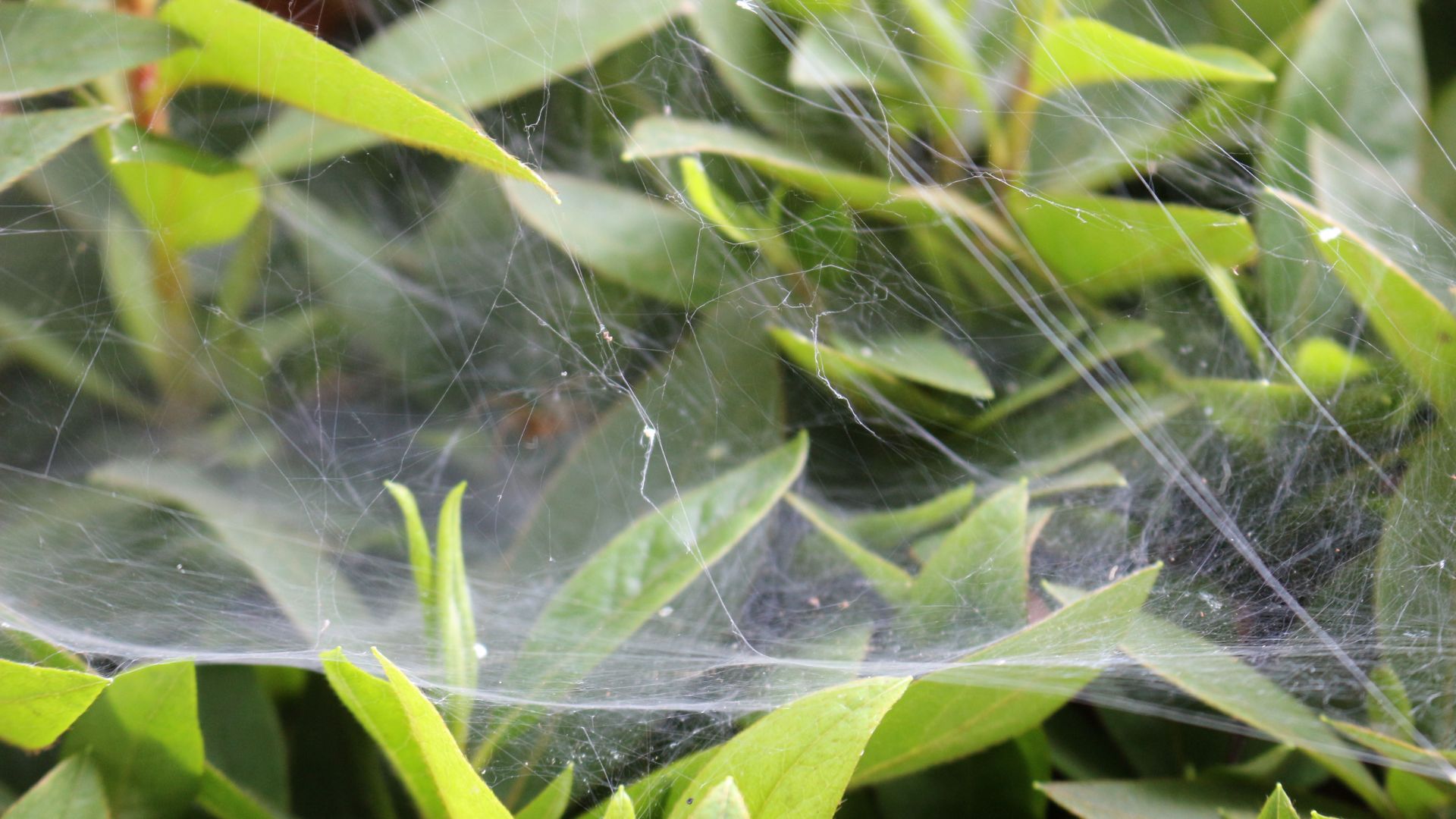
Autumn is officially here and with it a drop in temperature. So as we prepare our gardens for a long winter ahead, it's time to bring our temperature-sensitive potted plants indoors – but not before they've been flooded.
After finishing your essential September gardening jobs, it'll be time to take your more delicate potted perennials or migrating houseplants inside for shelter. Unlike some of the best winter bedding plants, these species won't survive too well in adverse winter weather conditions.
However, before you rehome plants inside, you might want to flood them with water first. One houseplant expert has shared how flooding your plants before they re-enter your home can save you from being overrun with unwanted creepy crawlies.
Garden hack: Plant flooding for an insect-free home
It's not just the cold and bad weather that we dread getting when winter comes around, it's also this time of year when we start asking how to get rid of spiders in our homes. Yes spider season is upon us and it's important to do whatever you can to prevent them entering your home in the first place.
Sharing the hack on her Instagram, Madi Gubler explains that in order to keep those pests outside you need to flood your potted plants and force any pests to vacate the pots.
She says, "If temperatures are starting to cool where you live, it’s time to bring those houseplants back inside!! BUT FIRST, grab the hose and flood your plants!"
Fear not about your plant watering routine being messed up by this 'flooding' process, Madi says there's no cause for concern.
"I’m not talking about a little water out of the drainage hole, I’m talking Niagra Falls! As long as your planters have good drainage, you won’t need to worry about overwatering."
The flooding, she explains, lets any unwanted pest know that it's time to find a new home and escape quickly. This watering technique also flushes out the salts that build up over time in the soil, these make it harder for your plants to absorb water. So it's a win-win.

Once you've flooded your plants and are satisfied that no more insects are residing in or around the pots then you simply just need to leave them to air dry. After they've dried off you're safe to bring your plants in.
When the weather starts to change it's important to bring certain plant species either into your home or place them under shelter. Chris Bonnett, Gardening expert and the founder of GardeningExpress.co.uk says, "Timing is key when it comes to moving your plants inside. Most tender plants start to suffer when the temperatures at night drop below ten degrees and by the time the first frosts hit, it might already be too late."
He says it's best to take tropical plants, tender perennials and houseplants indoors but again he stresses the importance of checking for pests before you do so.
This technique is also great if you're trying to get rid of little black flies in your home, fly eggs are often hidden on plant leaves and stems so flooding will wash them off too.
To truly ensure your plants aren't doubling up as a bug hotel, we recommend treating them with neem oil regularly. This will put off any unwanted pests whilst ensuring your plant is healthy and chemical-free.
Knowing how to care for your indoor plants all year round is important, but it's especially so this time of year. Moving your plants inside after they've enjoyed a summer in the fresh air is a good place to start but keep up with your feeding and watering routines to keep them happy through winter.







